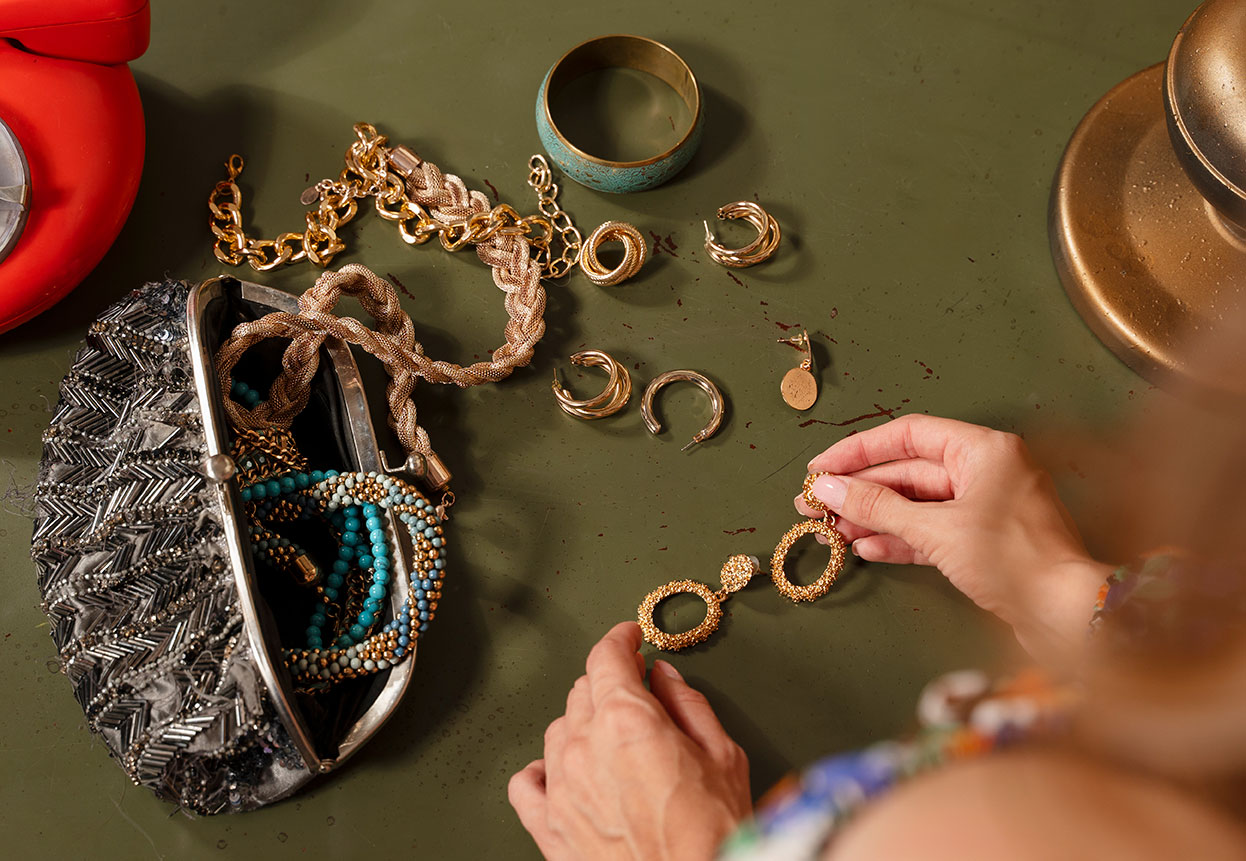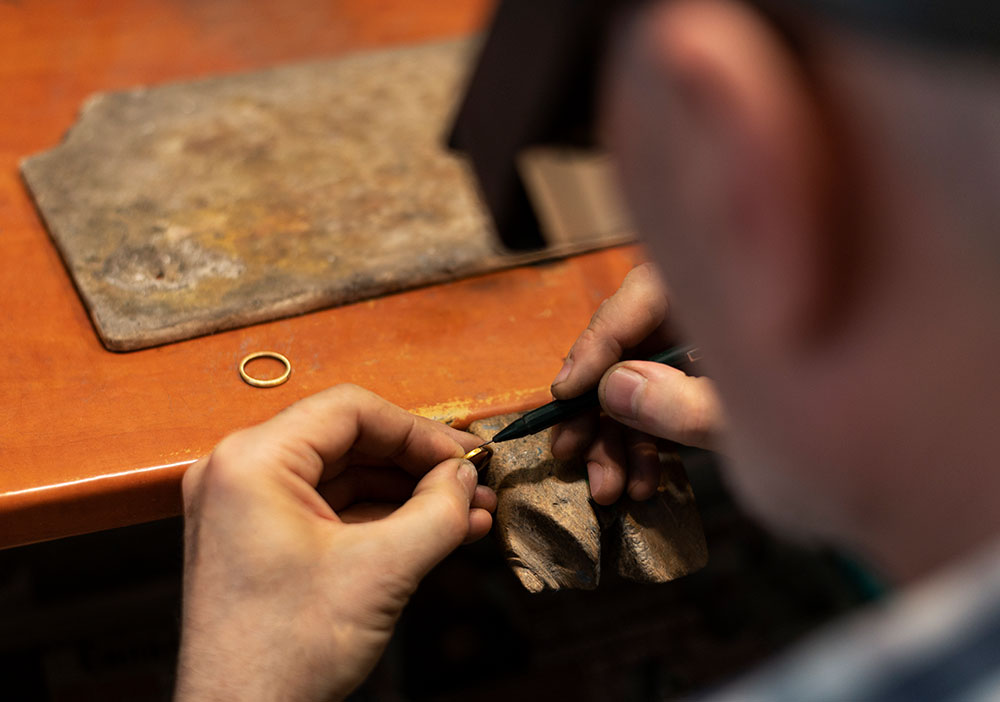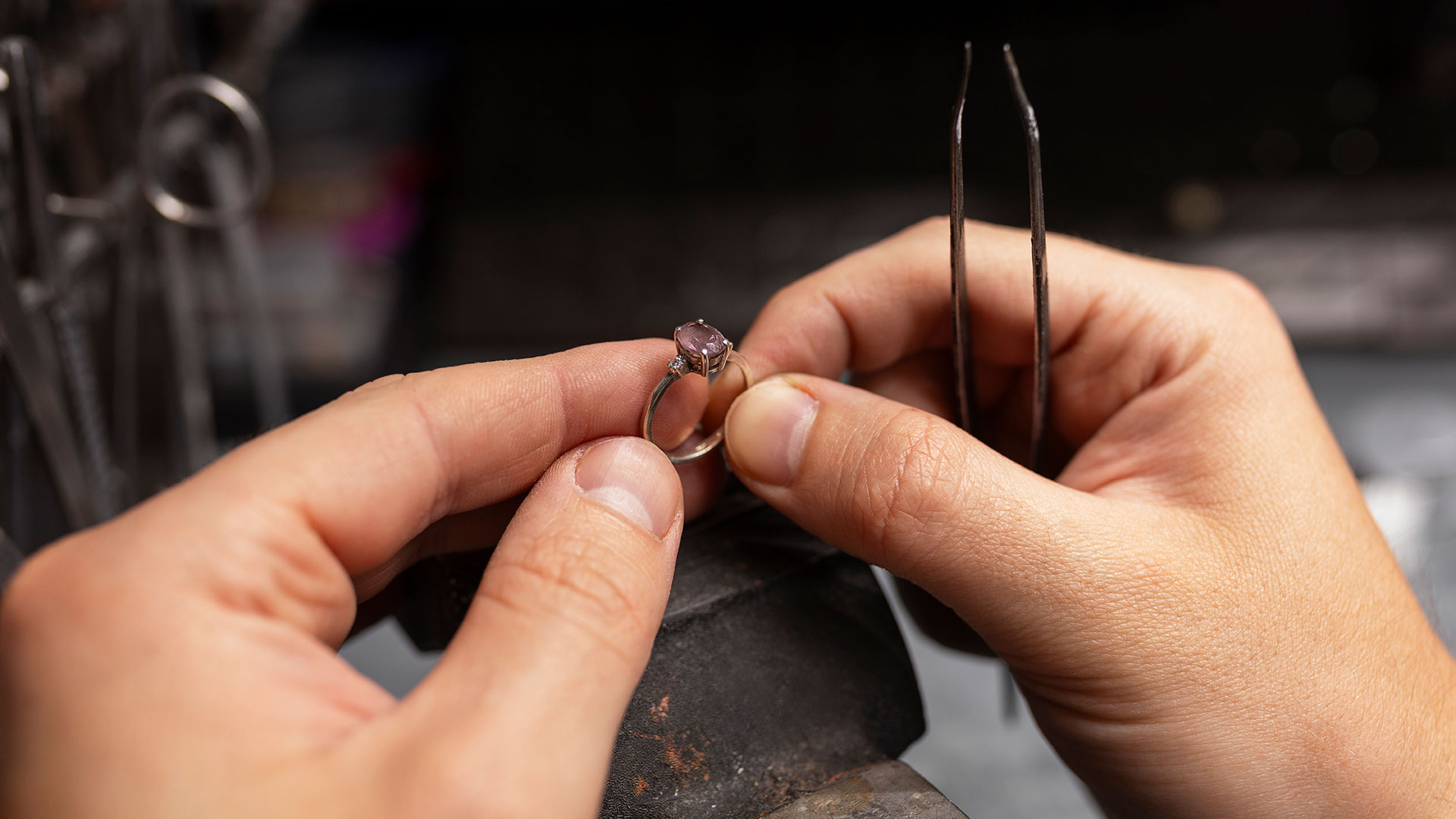

30/05/2025 Latest News
If you’re hoping to make money from an old jewellery collection, perhaps you are selling something on behalf of an elderly relative, or you’ve inherited some jewellery and are wondering how valuable it might be, hallmarks can tell you a great deal. From confirming the type and purity of metal to revealing a piece’s age and even the identity of the original maker, these tiny stamps are one of the best ways to assess the potential value of antique jewellery.
Understanding what those little symbols mean could be the difference between uncovering a hidden gem worth thousands or selling something far below its true market value. At Auctioneum, our expert valuers have put together this handy guide on how to start decoding hallmarks. You can also come along to one of our valuation days to find out more about your jewellery's value.
Hallmarks are official stamps applied to precious metal items, typically gold, silver, platinum, and palladium, to certify their purity and authenticity. In the UK, hallmarking has been a legal requirement for centuries, making British hallmarks some of the most detailed and trusted in the world.
A hallmark typically tells you:
Understanding these marks is key to uncovering the story—and the value—behind vintage jewellery.

These marks indicate the precious metal content of the item. Look out for:
The purity of the metal directly impacts value. For example, 18ct gold contains 75% pure gold, making it more valuable than 9ct gold, which contains just 37.5%.
The UK has four main assay offices, each with its own identifying symbol:
Older pieces may feature marks from now-closed assay offices such as Chester (closed in 1962) or Exeter (closed in 1883). Items bearing these marks can be particularly desirable to collectors due to their rarity and historical significance.
This is usually a set of initials or a unique symbol identifying the maker or company. Some well-known makers—such as Asprey, Garrard, or Liberty & Co.—add significant value to a piece. Researching the maker’s mark can reveal whether your jewellery is from a famous designer or was produced by a more modest workshop. Either way, it adds an important chapter to the item’s story.
A single letter, often in a specific font and shape, represents the year the piece was hallmarked. Each assay office uses its own system, so identifying the date letter involves cross-referencing the letter’s style, shape, and the office mark.
For example, a lowercase ‘h’ in a shield shape from the Birmingham Assay Office corresponds to the year 1907.
This small detail can make a big difference to value—an Edwardian-era piece from 1907 may command a much higher price than a near-identical design produced in the 1970s.
When it comes to antique or vintage jewellery, hallmarks do more than verify authenticity—they can substantially influence a piece’s market value. Here’s how:

If you’ve identified hallmarks on your jewellery and believe you may have something of value, it’s always worth seeking a professional valuation. An expert can confirm the authenticity of the marks, assess the item’s condition, and advise on the best way to sell it—whether privately, through a specialist jewellery auction, or by direct sale.
At Auctioneum, we regularly hold antique jewellery auctions across Bristol and Bath, helping clients achieve excellent results for their treasured items. Our valuation experts can guide you through the entire process—from identifying hallmarks and assessing value to presenting your jewellery to the right audience of buyers. You can also come along to one of our valuation days to find out more about your jewellery's value or book a valuation in Bristol or Bath here.
If you’re sitting on a forgotten jewellery box or wondering about the value of a family heirloom, don’t leave it to chance. Contact Auctioneum for a free, no-obligation valuation, or visit one of our upcoming jewellery auctions to see first-hand how much your vintage jewellery could be worth.